Text
PAMBABATOK: Reasons Why It's Dying and How We Can Help Preserve the Culture
SILVA, Villa Catarica
The reason why Pambabatok has become a dying art, is because of the following factors:
Modernization, which got rid of the headhunting culture of the Butbut tribe. Since no one really does that nowadays;
People nowadays think that having a tattoo can hinder your chances of getting a job in a city since there are a lot of prejudices about people having tattoos;
Having diverse religions. In the Philippines, there are a lot of religions and their beliefs might have affected the beliefs of this tribe, especially the younger generation who doesn't believe that tattoos would make them feel beautiful, and;
The standards of beauty is always changing, what was beautiful a thousand years ago might not be beautiful to us in the 21st century.
The tradition of having tattoos in every part of your body is not something everyone is used to seeing. The mere fact that people from America associate tattoos with crime and delinquency, shows that this culture might not fare well in other places. What we, the younger generation can do, is to bring awareness of this dying tradition, and learn more about ethnic differences, and how different our perspectives are from our ancestors. There needs to be apprentices of pambabatok who can continue the legacy of their ancestors so that whatever happens, this tradition will never be forgotten.
Years after our colonizers invaded the Philippines, a lot has changed. The way we talk, the way we dress, the way we speak, and definitely the traditions our ancestors used to have. Some of which we can never retrieve. Our cultures might be different, but I hope everyone who reads this had the urge to learn about their own traditions. Our cultures are what makes us- us, it is a part of our identity and no one can ever take that away from us. We are laced with rich cultures that needs to be protected and appreciated, let's make our ancestors proud and learn more about ourselves instead of admiring other people's cultures and learning more about them while we know nothing about ours.
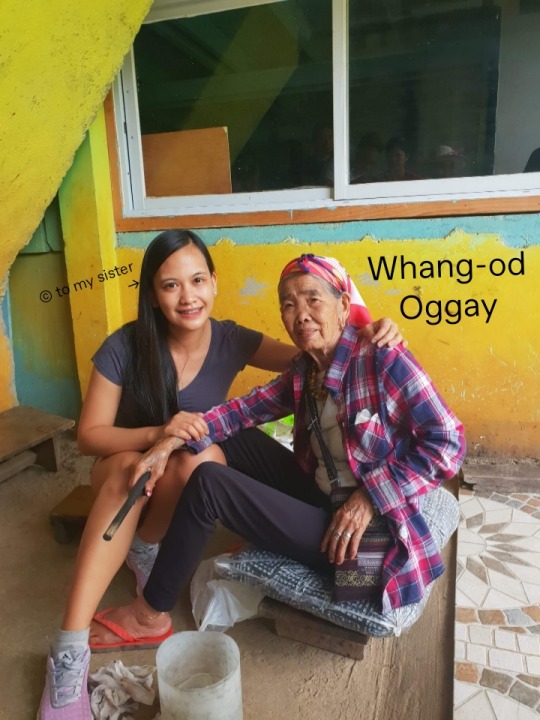
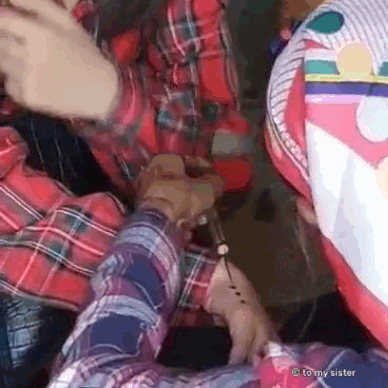
0 notes
Text
PAMBABATOK: Learning the Craft
SILVA, Villa Catarica
This traditional hand-tap tattoo utilizes 'siit' or a thorn from a lemon plant, other sources have stated that it is the thorn of the pomelo plant, and the ink used for the tattoo is soot mixed with a little bit of water inside a coconut bowl. The short stick they use for hand tapping is called 'pat-ik' and the stick to where the thorn is attached to is called 'gisi'. My sister along with some of her coworkers went to Buscalan to visit Apo Whang-od. I have been told that the skin, along with the flesh comes off with the thorn as it goes in and out of your skin.
The person who does pagbabatok is called a mambabatok, and Whang-od Oggay, otherwise known as Apo Whang-od is the oldest mambabatok who is keeping this tradition alive. She has never been married, but had a lot of lovers back in the day. Apo Whang-od is also 103 years old and has passed down pagbabatok to two of her grandnieces. Hoping to keep the tradition alive. Pagbabatok got a lot of attention a couple of years back, 2017 to be exact, because they were featured in a series called 'Dayaw' which was produced by both the National Commission for Culture and the Arts (NCCA) and ABS-CBN News Channel. She was nominated for the National Living Treasures award back in 2017 during the 66th Manila fame event where she tattooed people who went to the event. After her recognition, Filipinos, among with foreigners, visited Apo Whang-od in Buscalan to get tattooed by her.
Compass tattoo- for guidance of travelers
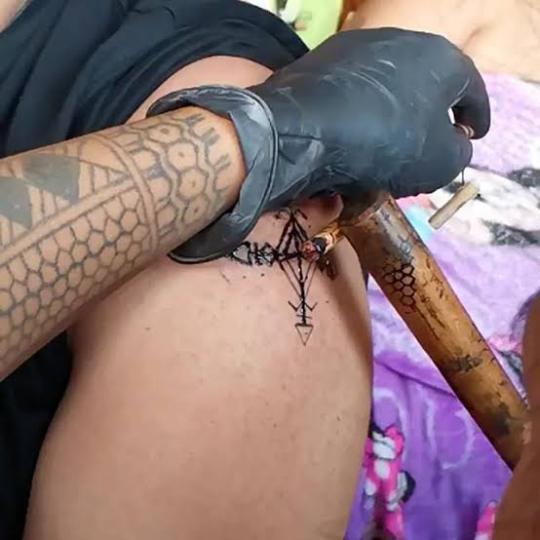
Serpent eagle on top of a scorpion tattoo
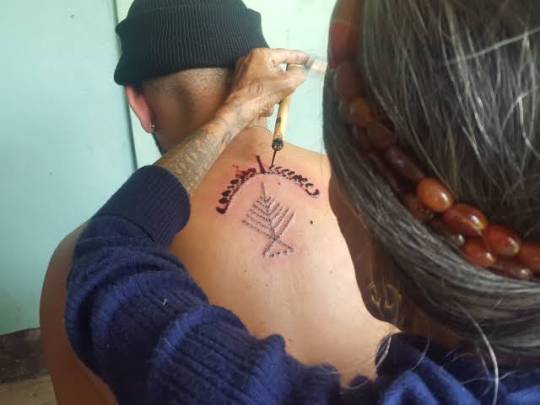
Apo Whang-od

0 notes
Text
PAGBABATOK: History
SILVA, Villa Catarica
Even before the Spaniards colonized the Philippines, our ancestors had their own traditions. Some of these traditions stayed with us until now and we were raised according to those traditions, but after we were colonized by the Spaniards for 333 years, the Americans for 48 years, and the Japanese for 3 years, respectively. Our pure Filipino culture and blood has been mixed with various cultures, making us a diverse country. Because of our diverse culture, some of oue traditions are slowly dying. One of the traditions that is rapidly dying in our country is called 'pagbabatok' or hand-tapped tattoo which belongs to the Butbut tribe in Buscalan, Tinglayan, Kalinga.
I'm pretty sure a considerable amount of people- Filipinos and even foreigners, has heard of the term 'pagbabatok' especially if they're fond tattoos and/or art enthusiasts. Pagbabatok or pambabatok, is native to the Cordillera region in the Butbut tribe who are known for their extensive tattoos and rituals in the Northern Mountains of Luzon. This method of tattoing has been around for a thousand years already and because of technology and modernization, this tradition happens to be dying rapidly.
Years ago, this tribe is known for their headhunting culture, and if a man has proven his courage in a battle against warring tribes by cutting the head of his enemy, he then would be given a tattoo to symbolize and honor his bravery and loyalty to the tribe. For women, on the other hand, tattoos would be given as a rite of passage to the tribe and as a symbol of beauty. Which also means that if women had more tattoos, the more beautiful they are in the eyes of their tribe. These tattoos transform girls into women which means they become eligible for marriage and for bearing a child of their own. The tattoos from this tribe may seem like they are nothing but scribbles, but each tattoo signifies something. An example of this is a design called 'ginawang' (a hawk depicted upright) is a spiritual messenger, implying communication with the higher realm, as ancestral gods are believed to communicate via actions and flights of birds. Another design is called 'kinilat' which represents the union of men and women; men being the flowing river, and women as the riverbank.
Ginawang

Kinilat
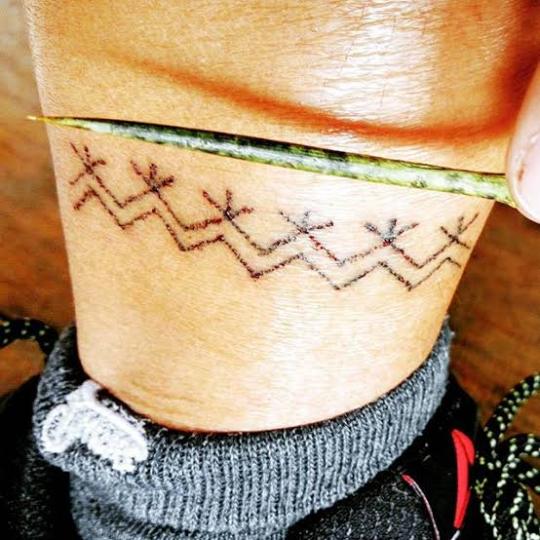
1 note
·
View note